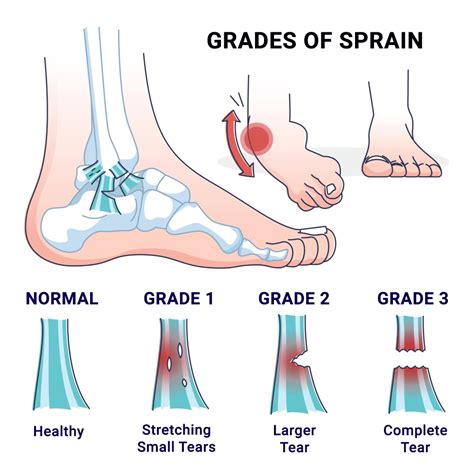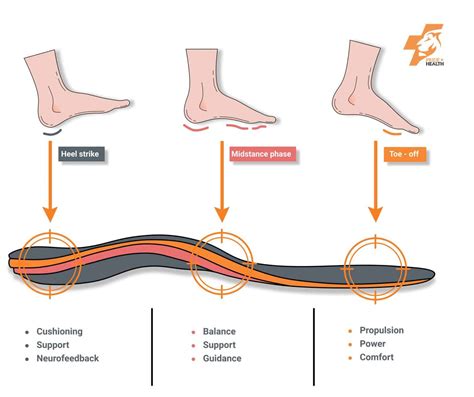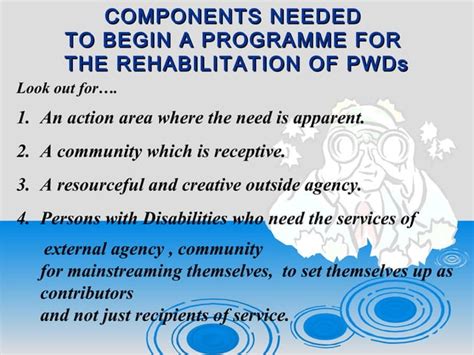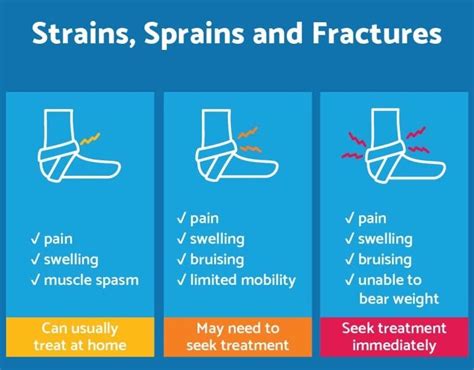Intro
Relieve ankle pain with effective therapy treatments, including physical therapy, rehabilitation, and orthotics, to promote healing and prevent future sprains and fractures, ensuring optimal ankle injury recovery and rehabilitation.
Ankle injuries are one of the most common types of injuries that people experience, particularly those who engage in sports or physical activities. The ankle joint is a complex structure that consists of bones, ligaments, and tendons, which can be prone to injuries such as sprains, strains, and fractures. When an ankle injury occurs, it can be painful and debilitating, making it difficult to perform daily activities. Fortunately, there are various ankle injury therapy treatments available that can help alleviate pain, promote healing, and restore function to the affected ankle.
Ankle injuries can be caused by a variety of factors, including twisting or rolling of the ankle, landing awkwardly from a jump, or sudden stops and changes of direction. The severity of the injury can range from mild to severe, and the treatment approach will depend on the extent of the damage. In some cases, ankle injuries can be treated with self-care measures such as rest, ice, compression, and elevation (RICE), while more severe injuries may require medical attention and rehabilitation. Ankle injury therapy treatments are designed to address the underlying causes of the injury, promote healing, and prevent future injuries from occurring.
The importance of seeking proper treatment for ankle injuries cannot be overstated. If left untreated, ankle injuries can lead to chronic pain, limited mobility, and increased risk of future injuries. Furthermore, ankle injuries can also affect other parts of the body, such as the knee, hip, and lower back, leading to a range of other problems. By seeking ankle injury therapy treatments, individuals can ensure that their ankle is properly healed and that they can return to their normal activities without experiencing ongoing pain or discomfort.
Ankle Injury Therapy Treatment Options

There are various ankle injury therapy treatment options available, including physical therapy, occupational therapy, and orthotics. Physical therapy is a common treatment approach for ankle injuries, and it involves a range of exercises and techniques designed to promote healing, improve mobility, and strengthen the ankle joint. Occupational therapy, on the other hand, focuses on helping individuals to perform daily activities and tasks, despite their ankle injury. Orthotics, such as ankle braces and supports, can also be used to provide stability and protection to the ankle joint, reducing the risk of further injury.
Benefits of Ankle Injury Therapy Treatments
Ankle injury therapy treatments offer a range of benefits, including pain relief, improved mobility, and increased strength and stability. These treatments can also help to reduce the risk of future injuries, by promoting proper healing and rehabilitation. Additionally, ankle injury therapy treatments can be tailored to meet the individual needs and goals of each person, ensuring that they receive the most effective treatment approach for their specific injury.Physical Therapy for Ankle Injuries

Physical therapy is a key component of ankle injury therapy treatments, and it involves a range of exercises and techniques designed to promote healing, improve mobility, and strengthen the ankle joint. Physical therapy can be used to treat a range of ankle injuries, including sprains, strains, and fractures. The goal of physical therapy is to restore function to the affected ankle, allowing individuals to return to their normal activities without experiencing ongoing pain or discomfort.
Some common physical therapy techniques used to treat ankle injuries include:
- Range of motion exercises: These exercises are designed to improve mobility and flexibility in the ankle joint.
- Strengthening exercises: These exercises are designed to strengthen the muscles surrounding the ankle joint, providing stability and support.
- Balance and proprioception exercises: These exercises are designed to improve balance and proprioception (awareness of body position), reducing the risk of future injuries.
Occupational Therapy for Ankle Injuries
Occupational therapy is another important component of ankle injury therapy treatments, and it focuses on helping individuals to perform daily activities and tasks, despite their ankle injury. Occupational therapy can be used to treat a range of ankle injuries, including sprains, strains, and fractures. The goal of occupational therapy is to enable individuals to maintain their independence and participate in activities that are important to them, despite their ankle injury.Some common occupational therapy techniques used to treat ankle injuries include:
- Activity modification: This involves modifying daily activities to reduce stress and strain on the affected ankle.
- Adaptive equipment: This involves using adaptive equipment, such as crutches or walkers, to reduce mobility and balance challenges.
- Home modifications: This involves making modifications to the home environment, such as removing tripping hazards, to reduce the risk of falls and further injury.
Orthotics for Ankle Injuries

Orthotics, such as ankle braces and supports, can be used to provide stability and protection to the ankle joint, reducing the risk of further injury. Orthotics can be custom-made to meet the individual needs of each person, ensuring a proper fit and optimal support. Some common types of orthotics used to treat ankle injuries include:
- Ankle braces: These are designed to provide support and stability to the ankle joint, reducing the risk of further injury.
- Ankle supports: These are designed to provide compression and support to the ankle joint, reducing pain and swelling.
- Orthotic shoes: These are designed to provide additional support and stability to the ankle joint, reducing the risk of further injury.
Prevention of Ankle Injuries
Preventing ankle injuries is an important aspect of ankle injury therapy treatments, and it involves taking steps to reduce the risk of injury. Some common prevention strategies include: * Wearing proper footwear: This involves wearing shoes that provide adequate support and stability to the ankle joint. * Warm-up and stretching exercises: This involves performing warm-up and stretching exercises before engaging in physical activity, to reduce the risk of injury. * Strengthening exercises: This involves performing strengthening exercises to strengthen the muscles surrounding the ankle joint, providing stability and support.Rehabilitation and Recovery

Rehabilitation and recovery are critical components of ankle injury therapy treatments, and they involve a range of exercises and techniques designed to promote healing, improve mobility, and restore function to the affected ankle. Rehabilitation and recovery can be a lengthy process, requiring patience, dedication, and commitment. Some common rehabilitation and recovery techniques include:
- Progressive resistance exercises: These exercises are designed to strengthen the muscles surrounding the ankle joint, providing stability and support.
- Balance and proprioception exercises: These exercises are designed to improve balance and proprioception, reducing the risk of future injuries.
- Functional activities: These activities are designed to simulate daily activities, such as walking, running, and jumping, to promote healing and restore function to the affected ankle.
Common Ankle Injuries
There are several common ankle injuries that can benefit from ankle injury therapy treatments, including: * Ankle sprains: These occur when the ligaments surrounding the ankle joint are stretched or torn. * Ankle strains: These occur when the muscles surrounding the ankle joint are stretched or torn. * Ankle fractures: These occur when one or more of the bones in the ankle joint are broken.Treatment Options for Common Ankle Injuries

There are various treatment options available for common ankle injuries, including physical therapy, occupational therapy, and orthotics. The goal of treatment is to promote healing, improve mobility, and restore function to the affected ankle. Some common treatment options include:
- Physical therapy: This involves a range of exercises and techniques designed to promote healing, improve mobility, and strengthen the ankle joint.
- Occupational therapy: This involves helping individuals to perform daily activities and tasks, despite their ankle injury.
- Orthotics: This involves using orthotics, such as ankle braces and supports, to provide stability and protection to the ankle joint.
Conclusion and Future Directions
In conclusion, ankle injury therapy treatments are an essential aspect of treating ankle injuries, and they involve a range of exercises and techniques designed to promote healing, improve mobility, and restore function to the affected ankle. By seeking ankle injury therapy treatments, individuals can ensure that their ankle is properly healed and that they can return to their normal activities without experiencing ongoing pain or discomfort. Future directions for ankle injury therapy treatments include the development of new and innovative treatments, such as stem cell therapy and platelet-rich plasma therapy, which may offer improved outcomes and reduced recovery times.What are the most common causes of ankle injuries?
+Ankle injuries can be caused by a variety of factors, including twisting or rolling of the ankle, landing awkwardly from a jump, or sudden stops and changes of direction.
What are the benefits of ankle injury therapy treatments?
+Ankle injury therapy treatments offer a range of benefits, including pain relief, improved mobility, and increased strength and stability.
How can I prevent ankle injuries?
+Preventing ankle injuries involves taking steps to reduce the risk of injury, such as wearing proper footwear, performing warm-up and stretching exercises, and strengthening the muscles surrounding the ankle joint.
We hope this article has provided you with a comprehensive overview of ankle injury therapy treatments. If you have any questions or comments, please don't hesitate to reach out. Share this article with others who may be experiencing ankle injuries, and let's work together to promote healing and restore function to the affected ankle.
